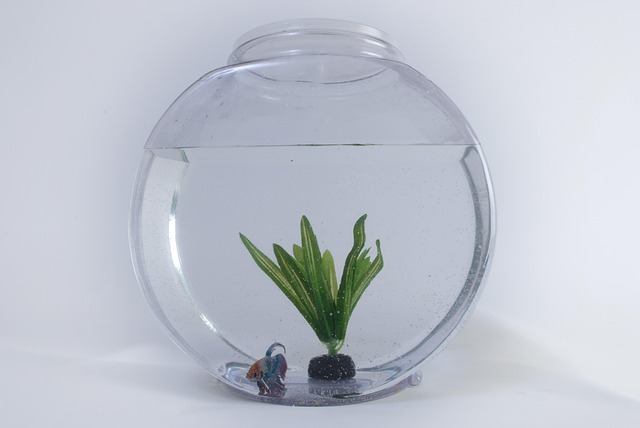Aquariums, especially in public spaces or research facilities, need advanced security measures. IoT-enabled fish tanks offer a revolutionary solution by integrating smart technology for real-time video feeds and water quality monitoring. This allows professionals and enthusiasts to remotely observe and prevent potential hazards, enhancing safety protocols for marine life and the facility. These smart aquariums provide data on water conditions and fish behavior, catering to busy individuals or travelers who want convenient aquarium care. Modern surveillance systems with IoT capabilities include features like motion detection, temperature alerts, remote control of lighting and feeding, and AI analysis of fish activity, making them ideal for various settings. Setting up these systems involves selecting suitable cameras, connecting them to a reliable network, and maintaining regular calibration and software updates.
In today’s digital era, remote monitoring is a game-changer for aquarium enthusiasts. With increasing concerns about security and accessibility, understanding the need for aquarium security cameras becomes crucial. This article explores the transformative power of IoT-enabled fish tanks through comprehensive sections on the importance of remote surveillance, the role of technology, modern surveillance system benefits, and setup guidelines. Discover how these innovative solutions enhance your aquarium experience.
Understanding the Need for Aquarium Security Cameras
Aquariums, especially those in public spaces or research facilities, require robust security measures to protect both their valuable inhabitants and the infrastructure. Traditional surveillance systems often fall short when it comes to remote monitoring due to their limited accessibility. Here’s where IoT-enabled fish tanks revolutionize aquarium security.
With the integration of smart technology, aquarium owners can now remotely observe and control their aquatic environments. These IoT-enabled fish tanks provide real-time video feeds, allowing professionals or enthusiasts to monitor water quality, detect any unusual behavior in the fish, and even prevent potential hazards before they occur. By utilizing security cameras with remote access capabilities, aquariums can enhance their safety protocols, ensuring the well-being of both the marine life and the facility itself.
The Role of IoT in Remote Monitoring of Fish Tanks
The Internet of Things (IoT) has revolutionized aquarium maintenance and ownership, especially with the advent of IoT-enabled fish tanks. These smart aquariums are equipped with various sensors and cameras that allow remote monitoring and control. By integrating IoT technology, aquarists can keep a close eye on their aquatic habitats from anywhere in the world. This is particularly beneficial for those who travel frequently or have busy schedules, ensuring they can still tend to their precious fish tanks as needed.
Remote monitoring systems provide real-time data on water quality, temperature, and even behavior patterns of fish. Security cameras installed inside the tank offer a clear view of the underwater environment, enabling users to observe their aquatic friends without disturbing them. This technology fosters a deeper connection between owners and their aquariums, promoting better care and ensuring the well-being of the fish.
Benefits and Features of Modern Aquarium Surveillance Systems
Modern aquarium surveillance systems, often equipped with IoT (Internet of Things) capabilities, offer a range of benefits for both hobbyists and professionals. These innovative solutions allow remote monitoring of aquariums via live video feeds, providing peace of mind for owners who want to ensure their aquatic environments remain healthy and thriving, even when they’re away. With real-time access to tank conditions, users can quickly detect issues like water quality changes, unusual behavior in fish, or potential problems with equipment.
Key features include motion detection, alerts for temperature fluctuations, and the ability to control lighting and feeding schedules remotely. Some advanced systems also incorporate AI for smart analysis of fish activity and health. These surveillance systems not only enhance convenience but also contribute to better aquatic ecosystem management, making them ideal for aquariums, research facilities, and homes with IoT-enabled fish tanks.
Setting Up and Maintaining an Efficient Remote Aquarium Monitoring System
Setting up and maintaining an efficient remote aquarium monitoring system involves integrating IoT (Internet of Things)-enabled fish tanks with a secure, user-friendly platform. The first step is selecting compatible cameras that offer high-definition video streaming and adjustable settings for optimal visibility under various lighting conditions. These cameras should be easy to install on or around the tank, ensuring they capture clear images of your aquatic environment. Once installed, connect the cameras to a reliable internet network to enable remote access through a dedicated application.
Regular maintenance includes calibrating camera angles, adjusting lighting for accurate color representation, and ensuring the system receives consistent power. It’s crucial to keep the software up-to-date to prevent security vulnerabilities and take advantage of new features that enhance monitoring capabilities. Additionally, consider implementing automated settings like motion detection alerts and scheduled feeding reminders to streamline your remote aquarium care routine.
Aquarium security cameras powered by IoT technology offer unprecedented remote monitoring capabilities, transforming the way we care for marine life. By leveraging these advanced surveillance systems, aquarium owners and professionals can ensure optimal conditions for their aquatic inhabitants, even when they’re away. With real-time data and alerts, prompt action can be taken to maintain water quality, detect health issues, and prevent any potential security breaches. Adopting IoT-enabled fish tanks is a step towards more efficient, sustainable, and enjoyable aquarium management.
